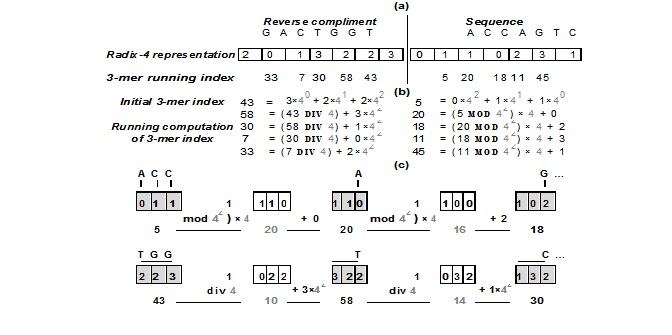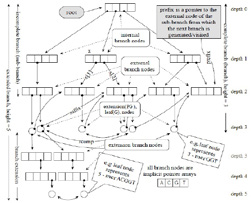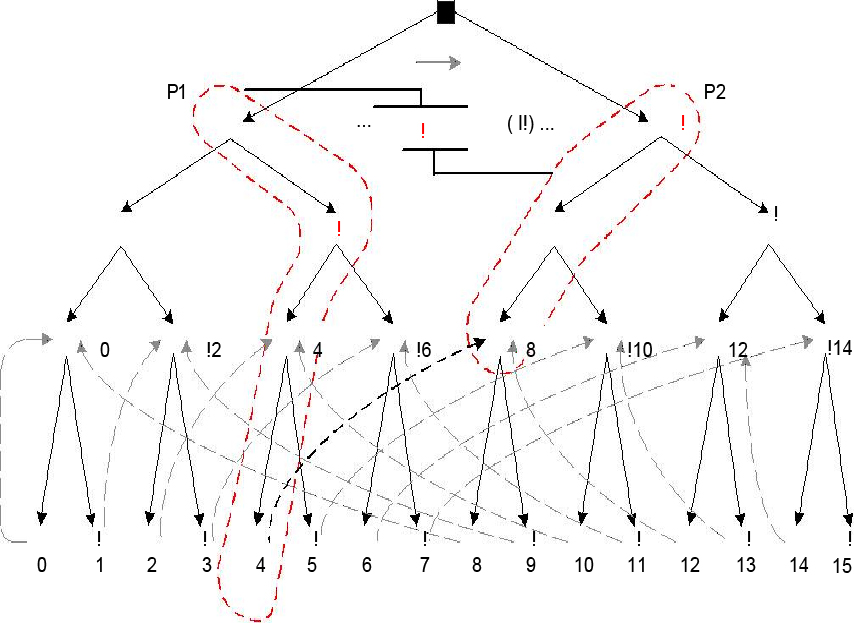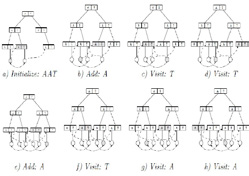
Figure 1: Computation of indices by the k-merCount algorithm. The figure illustrates the computation of successive indices of every 3-mer and its reverse complement of the sequence ACCAGTC. (a) The radix-3 representation of the sequence and its reverse compliment and the indices of each successive 3-mer and its reverse compliment of the sequence. (b) Computation of successive indices. (c) Graphical illustration of the computation of the index of a 3-mer and its reverse compliment in constant time given the index and reverse compliment index of its predecessor.





